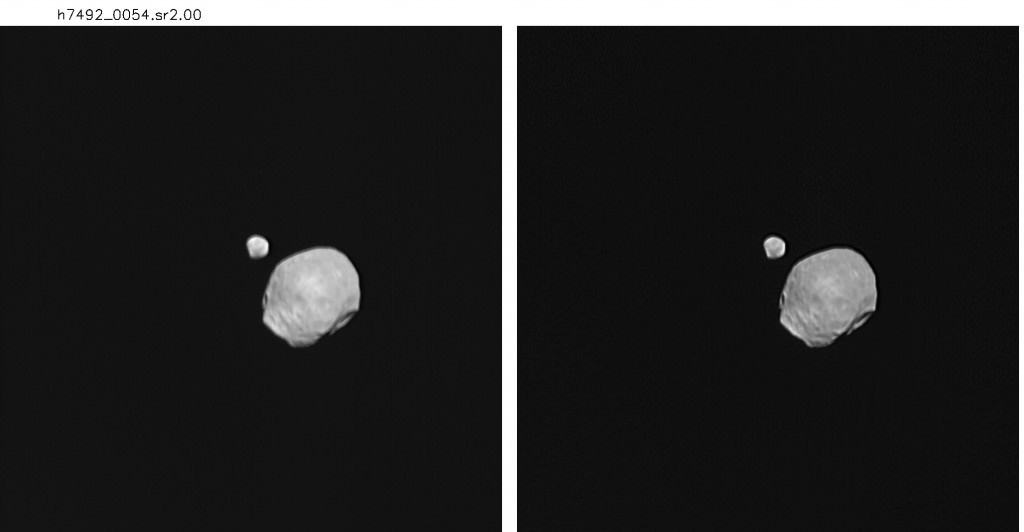That's no moon … wait … yes, it is, and more!
ESA's Mars Express has captured an unusual and rare occultation, all from its vantage point in orbit of Mars. The spacecraft's orbit brought it to the right place where it could witness the moment Mars' small moon Deimos passed in front of Jupiter and its four largest moons. Scientists say that celestial alignments like these enable a more precise determination of the Martian moons' orbits.
If you've seen Jupiter and its moons through binoculars or a small telescope, you might be envious of Mars Express' view, especially when Deimos passes through the field of view.
ESA said this sequence is made up of a series of 80 images taken by the High Resolution Stereo Camera onboard Mars Express on February 14, 2022. In the foreground, the images show the irregular shaped Deimos, with its rocky and cratered surface, and in the background Jupiter and the four Galilean satellites are visible. Jupiter is the large bright white spot and the moons appear as small white specks of light.
The distance between Mars Express and Jupiter is about 745 million km (463 million miles). In order for distant Jupiter and the moons to show up in this video, the images have contrast enhanced. Otherwise, because of the difference in brightness compared to the nearby Deimos, the distant objects would not have been visible.
The workhorse Mars Express has been in orbit of the Red Planet since 2003 and Mars' two moons, Deimos and Phobos, have been studied frequently by the spacecraft. Mars Express data has helped scientists understand more about the moons' composition, especially Phobos' mysterious grooved terrain, and learn more about the moons' puzzling origin. This includes tracking their orbits.
Scientists say the moons experience strong tidal forces from Mars, causing their orbits to fluctuate constantly. Phobos orbits extremely close to Mars at just 6,000 km (3,700 miles), and is moving towards the planet, while Deimos moves away from it. It is difficult to measure their orbits from Earth due to the brightness of Mars in comparison to these small bodies.
About a month and half after imaging the alignment with Jupiter, Mars Express captured another occultation, when Deimos was blocked by its larger sibling, Phobos. The images were taken on March 30, 2022 when Phobos was 12 km away from the camera. From this perspective it is difficult to see the size difference between the martian moons, as Deimos is further from the camera at a distance of 28 km.
Deimos has a diameter of 12 km (7.5 miles) and Phobos has a diameter 22 km (14 miles).
 Universe Today
Universe Today

